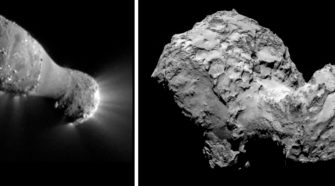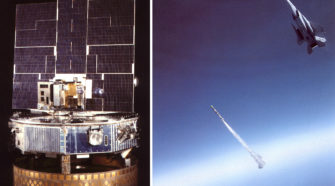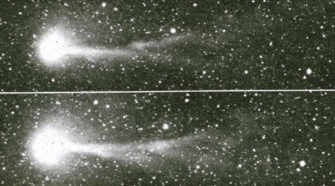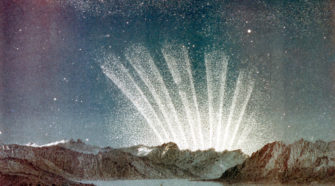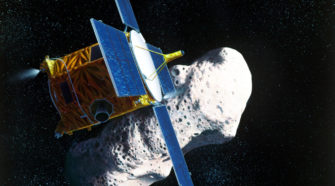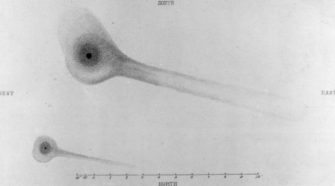Special Topic: Fred Whipple’s Comet Model
Once it had become clear that comets are bona fide members of the solar system just as planets and asteroids are, the question then becomes just what their physical nature might be. While they may appear to be fairly large in our nighttime sky, the fact that background stars shine through their tails and their …
This Week in History: February 23-29
FEBRUARY 23, 1988: David Levy obtains the final visual observation of Comet 1P/Halley during its 1986 return, using the 1.5-meter telescope at Catalina Observatory in Arizona. The comet was located 8.0 AU from the sun and appeared at 17th magnitude. FEBRUARY 24, 1979: The U.S. Defense Department satellite P78-1 is launched from Vandenberg Air Force …
Comet of the Week: Whipple-Fedtke-Tevzadze 1942g
Perihelion: 1943 February 6.72, q = 1.354 AU The name of Fred Whipple is legendary in cometary astronomy. He spent several decades as an astronomer and professor at Harvard University, and is best known for developing what he called the “icy conglomerate” model of a comet’s nucleus (more commonly referred to as the “dirty snowball”) …
Special Topic: Great Comets
Few, if any, sights in the nighttime sky are more impressive than that of a bright, long-tailed comet. It is little wonder that our ancestors of just a few centuries ago, who had little idea of what they were actually seeing, were amazed and perhaps even terrified of the sight, and even today the appearance …
This Week in History: February 16-22
FEBRUARY 17, 1930: A bright meteor appears in the sky above the midwestern U.S. and falls to the ground near Paragould, Arkansas. With a total mass of 370 kg, the Paragould meteorite, a stony chondrite, is the second-largest meteorite fall seen from and recovered in North America. FEBRUARY 17, 1996: The Near-Earth Asteroid Rendezvous (NEAR) …
Comet of the Week: 3D/Biela 1846 II
Perihelion: 1846 February 11.49, q = 0.856 AU The stories of the first two numbered periodic comets, 1P/Halley and 2P/Encke – both of which are future “Comets of the Week” – are well known. The third numbered periodic comet also has an interesting story, but unlike the earlier two, it will likely never be seen …

